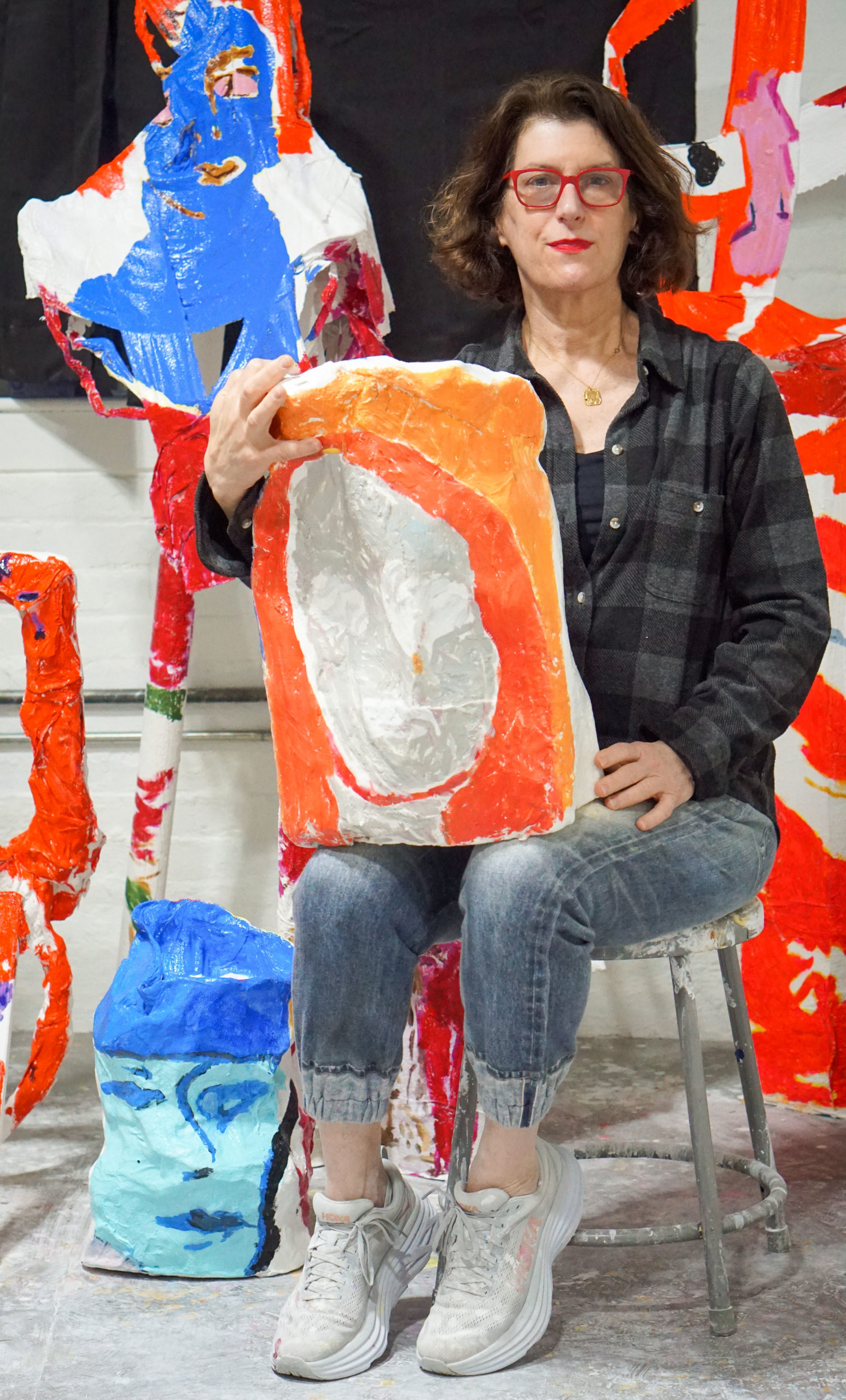
Since the early 1990s, Kerri Scharlin has examined her position as both the creator and the participant of her artistic practice. Whether placing herself as the subject (and commissioner) of bodies of work like “Interview” and “Kerri’s Coloring Book” which straddle the line between fine and commercial art, or painting surreal portraits of young girls and women with seemingly prominent yet vague societal roles, Scharlin maintains a strong connection to the rich and diverse concept of the feminine. “In Her Studio,” an ongoing series since 2014 and the nexus of her project in zingmagazine issue 25, distills Scharlin’s interests in the artistic process and the ever-evolving social dynamics of the art world.
Interview by Hayley Richardson
“In Her Studio” in zing issue 25 features 16 paintings of prominent female artists in, as the title suggests, their respective studios. Is there a common thread between these artists that drew you to them?
I remember when I was a kid growing up in Miami, never feeling like what was in my general vicinity was all there was. I always needed to avail myself of ideas from books to broaden my world. I never felt like I had access to everything, I needed to feed my mind and surround myself with prompts in hopes of elevating my game.
Now, whatever happens to cross my path, if I’m drawn to it, I mark by including it in my ongoing project. There’s nothing systematic about it except that I’ve narrowed my scope to female identifying artists. It’s kind of like having a committee of good examples to remind me of qualities that I want to include in my work. Whether it’s Amy Sillman’s making and unmaking of her visible decision-making processes, Molly Zuckerman-Hartung’s wrestling her multi-directional desires into paintings, or Jessica Stockholder’s coherent forms that emerge out of the layering of divergent kinds of information, I employ their images and so many more to remind me of what not to forget.
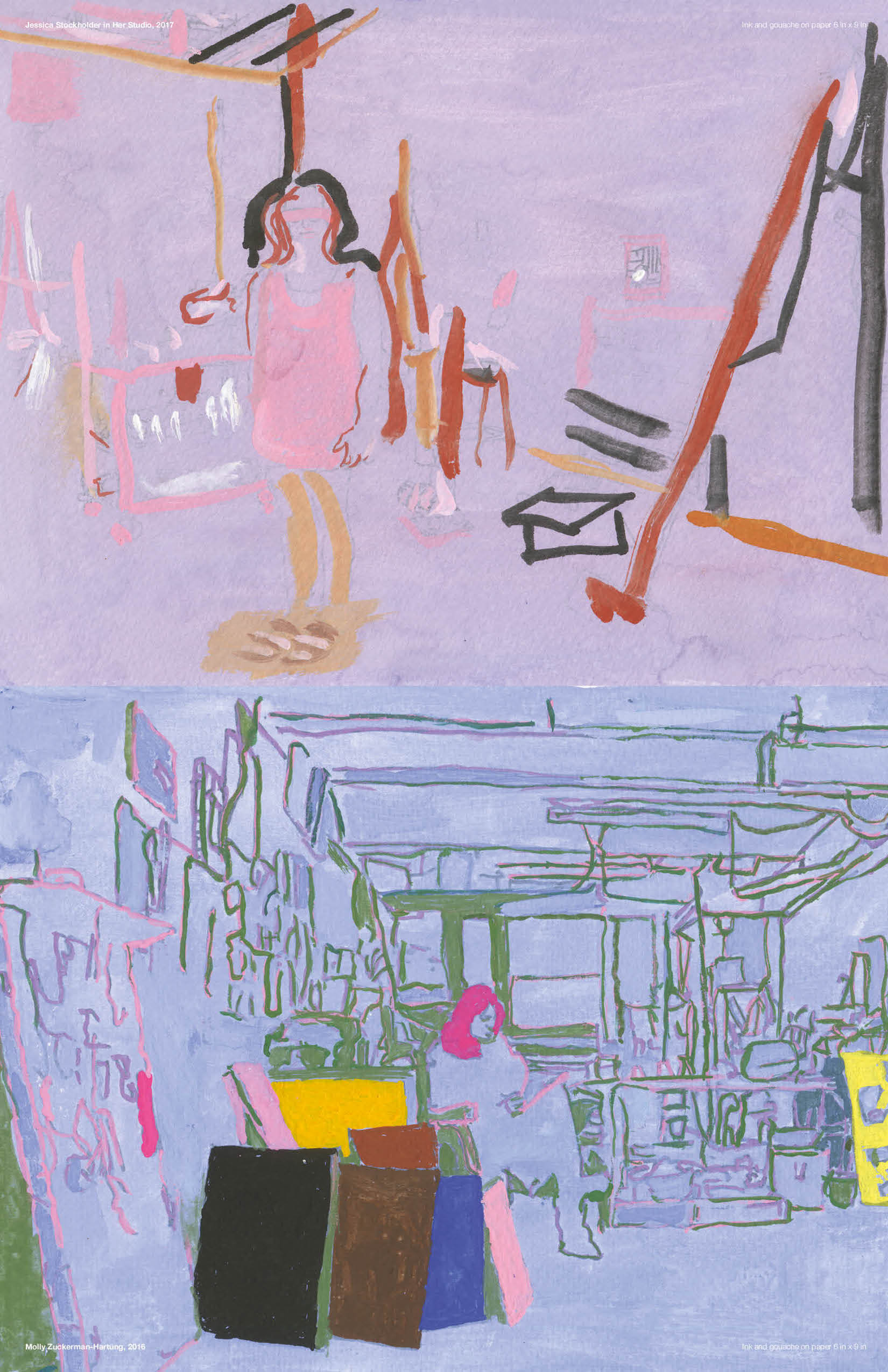
Top: Kerri Scharlin, Jessica Stockholder in Her Studio, ink and gouache on paper, 6 in x 9 in, 2017; Bottom: Kerri Scharlin, Molly Zuckerman-Hartung, ink and gouache on paper, 6 in x 9 in, 2016
Your project statement indicates that you made these paintings out of a desire to be known and connect with these artists. Has that manifested in any way?
Since I’ve started the project, I’ve gotten to know some of the artists that I’ve included. Many I haven’t. When I had a show in 2019, a good number of the artists portrayed came either to the opening or the closing where we met. Having a public opportunity to connect with the work and those artists was wonderful, as the in-person experience is so powerful. Understandably, it can be a little awkward to introduce the project to people over social media.
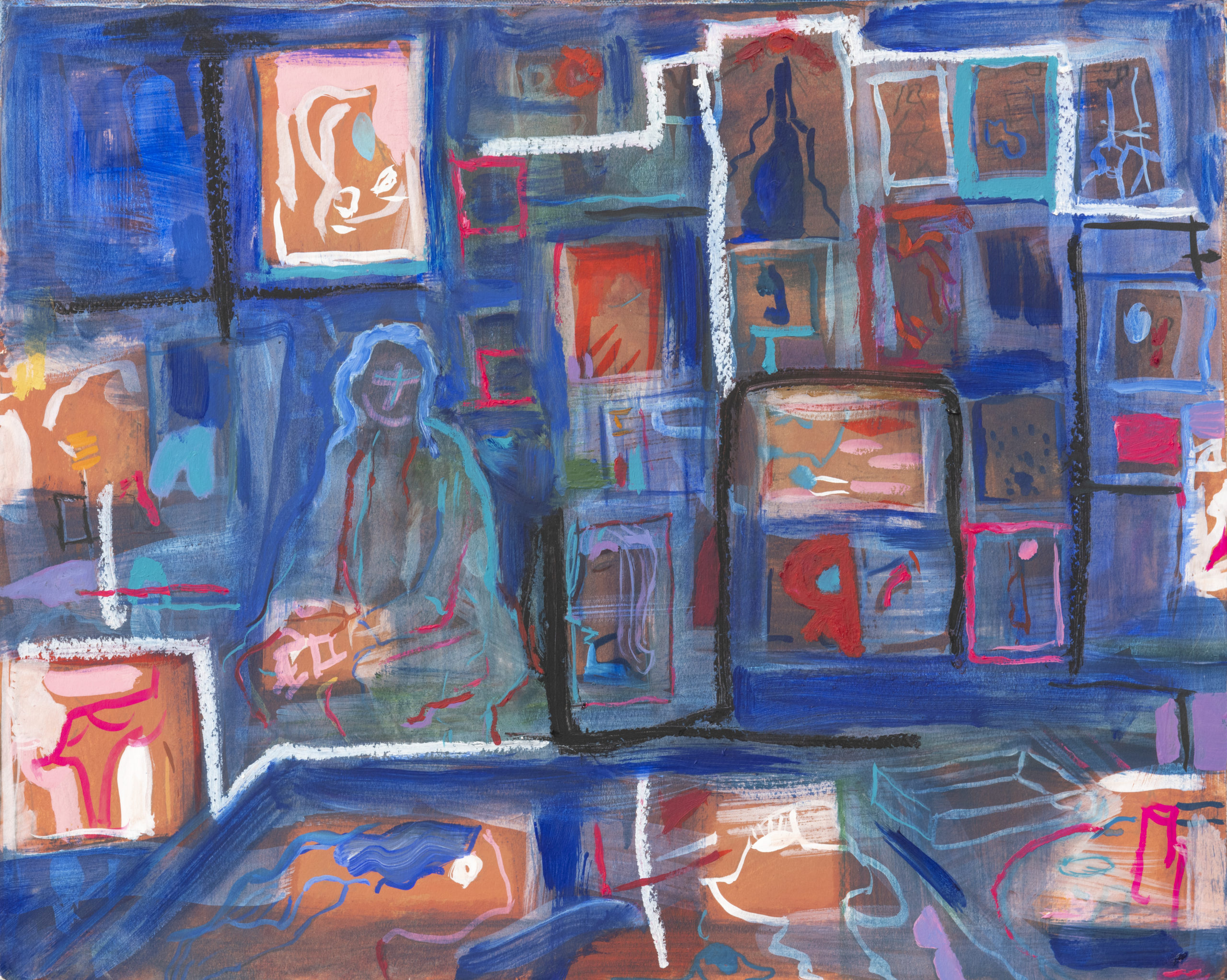
Kerri Scharlin, Wangechi Mutu, oil on paper mounted onto canvas, 16 in x 20 in, 2018. Dikeou Collection
You have an appearance in another zing 25 project, “The Women’s Group: Early 1990s, New York City,” curated by Natalie Rivera. The project profiles 18 artists who engaged, socialized, and networked within The Women’s Group and how it impacted their practices during that time. It is interesting that both projects address female relationships in the arts and appear in the same issue. How has your approach to networking evolved during your career and what form does it take now?
What I’ve learned as I’ve gotten older is how necessary a connection to a community is for me. When I was younger, I felt competitive and now I rarely do. Friendships and the feeling of making this journey alongside others is a salve and in fact the thing that makes this chosen life worthwhile for me. If I hadn’t learned it already, Covid drove the point home.
Always having had the facility to make representational work that looks somewhat “accurate”, I knew that I was part of a club, I was an artist. But the question soon became what do I do with that facility and how do I shape it? What do I decide to make and what do I decide not to make? How do I narrow and organize all my impulses into a particular thing that is my mark, my signature, my contribution to the world? Only then will I potentially be part of a more exclusive Club. Or perhaps a club that I could create myself.
I didn’t just want to narrow down to a signature style but to concurrently express how it feels when the world presents so many options and the challenge of putting myself forward in a unique way. I want to show my difficulties with that exact thing and to interrogate that difficulty, that inherent vulnerability. Some people are lucky enough not to have broken parts inside of them but I’m not one of them. I want to use that uncertainty as my lens to express my perceptions, the part that is looking for certainty and for identity and for, dare I say, acceptance.
Last year you did a residency at Yaddo in Saratoga Springs and Mass MoCA. How was your experience?
Residencies are another way of broadening my circle. Last year at Yaddo and Mass MOCA, having these small temporary communities, while not always the easiest thing for the introvert in me, expanded my boundaries in ways for which I’m eternally grateful. I have seen that it can be important and even feel intimate at times.
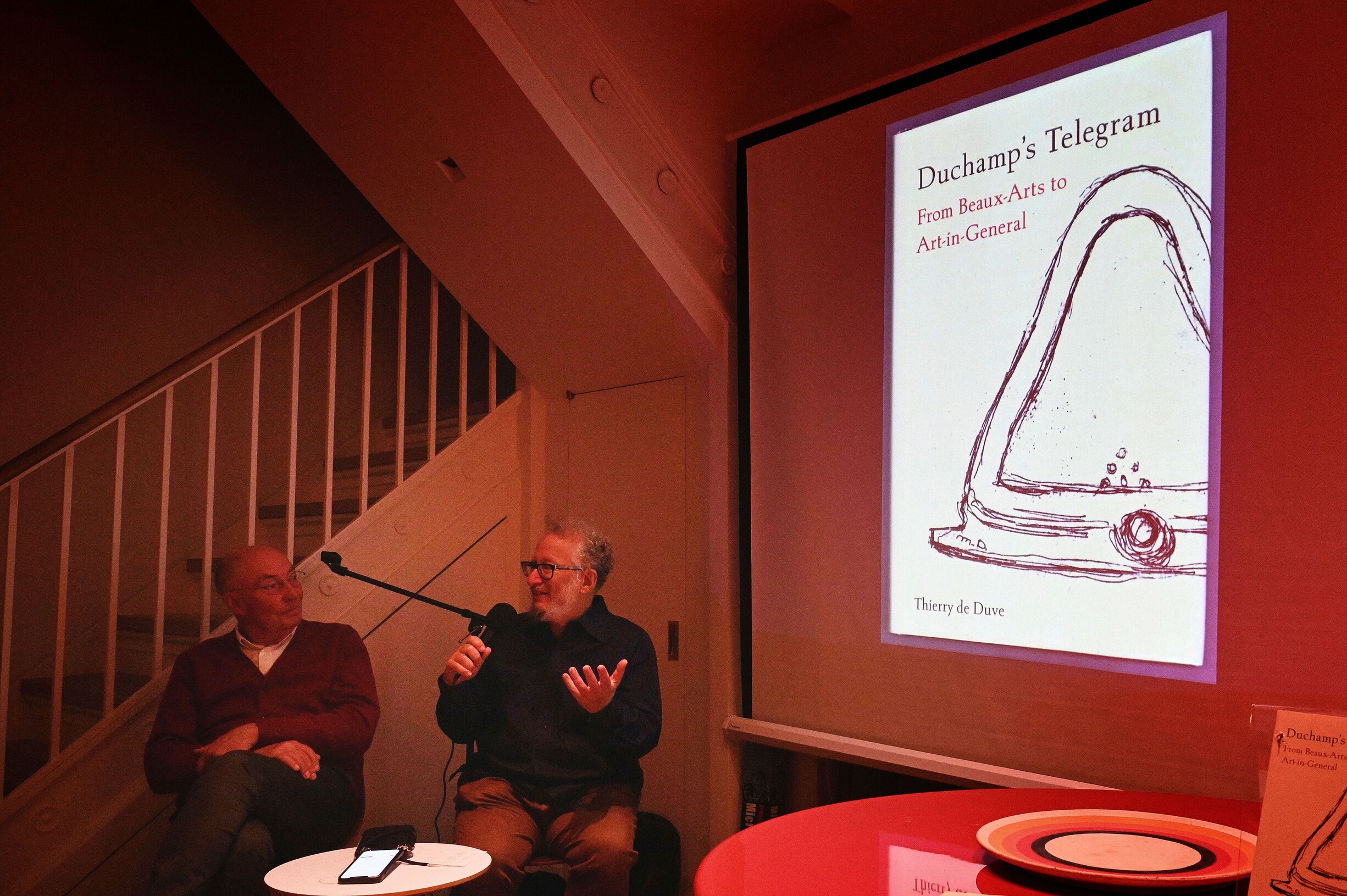
Thierry de Duve and Barry Schwabsky at Scharlin’s home salon
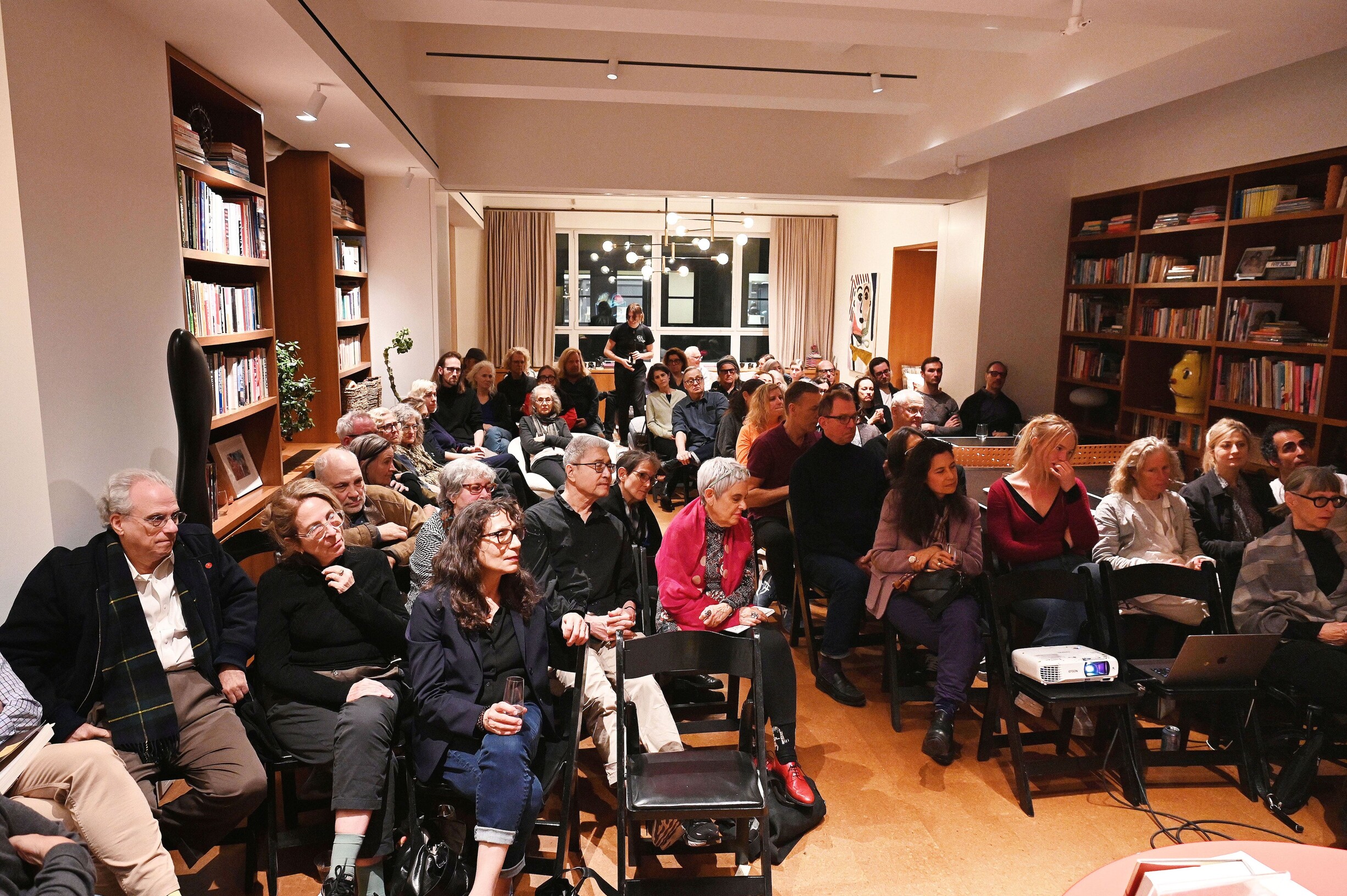
Salon audience
In November 2023 you hosted a conversation between Thierry de Duve and Barry Schwabsky which was published in a recent issue of Artforum. You’ve hosted such salons at your home/studio since 2016. What is the impetus/backstory of these events?
The Salons have been a way for me to surround myself in an intimate environment with friends, a sharing of goodwill with no strings attached, inviting people into my home and studio and to showcase projects in the community beyond objects: musical performances, poetry readings, book launches and discussions, performance art. I would like for them to become more frequent.
What are you working on currently? Do you have any projects or events
you’d like to plug?
Currently I’m revisiting my own images of artists to extend and complicate my compositional vocabulary. I’m using layering to find surprises that interest me. I’m also making sculptures that complement the paintings. I hope to show the work soon.